Home>Articles>What Is The Difference Between A Quilt And A Comforter
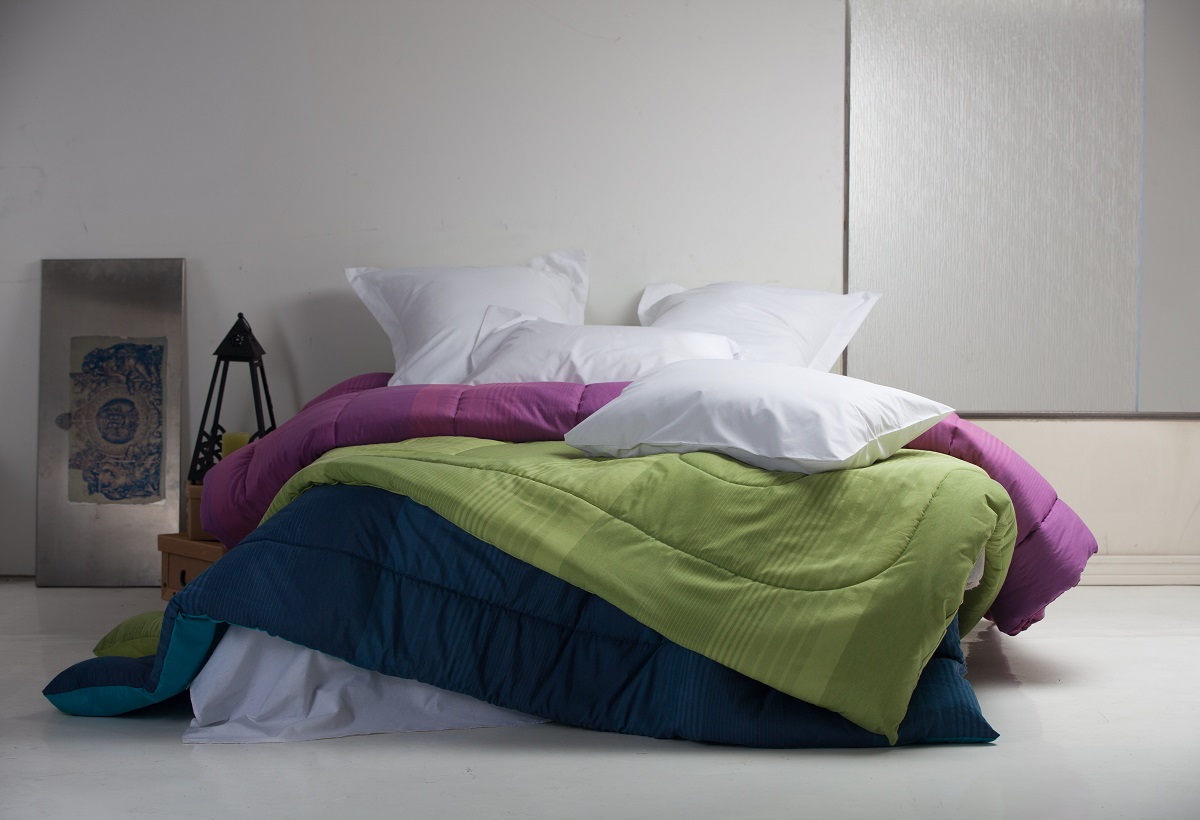

Articles
What Is The Difference Between A Quilt And A Comforter
Modified: January 18, 2024
Discover the distinction between a quilt and a comforter in this detailed articles. Learn more about their construction, design, and usage.
(Many of the links in this article redirect to a specific reviewed product. Your purchase of these products through affiliate links helps to generate commission for Storables.com, at no extra cost. Learn more)
Introduction
When it comes to bedding, there are a multitude of options available to suit different needs and preferences. Two common choices that often confuse people are quilts and comforters. While both serve the purpose of providing warmth and comfort during sleep, they are distinct in terms of their characteristics, uses, and designs. Understanding the difference between a quilt and a comforter can help you make an informed decision when selecting the right bedding for your home.
A quilt is a type of bed covering that is traditionally made by stitching layers of fabric together. It consists of three layers: the top layer (often referred to as the quilt top), the batting or filling layer, and the backing fabric. Quilts are typically stitched in a decorative pattern, such as blocks, squares, or intricate designs. The stitching, known as quilting, not only adds aesthetic appeal but also serves to hold the layers securely in place.
On the other hand, a comforter is a thick, padded bedding item that is filled with synthetic or natural materials. Unlike quilts, comforters are usually single-layered and do not have a separate backing fabric. They are often filled with down feathers, polyester, or a blend of fibers to provide insulation and warmth.
Both quilts and comforters have their distinct qualities and functions that make them suitable for different situations. In the following sections, we will delve deeper into the characteristics, uses, and differences between quilts and comforters.
Key Takeaways:
- Quilts are multi-layered, durable, and versatile, offering intricate designs and cultural significance. They provide excellent insulation, making them ideal for colder climates and adding a touch of history and artistry to any bedroom.
- Comforters, on the other hand, are single-layered, plush, and flexible, providing warmth and luxury to the bed. With a wide variety of designs and weights, they offer convenience and versatility to cater to individual temperature preferences and decor styles.
Definition of a Quilt
A quilt is a type of bed covering that is traditionally made by stitching together layers of fabric. It is a textile art form that has been practiced for centuries, with roots in different cultures around the world. Quilts are known for their intricate patterns and designs, created by stitching together different fabric pieces.
The top layer of a quilt, often referred to as the quilt top, is made up of fabric patches that are sewn together in various arrangements. These patches can be different colors, shapes, or patterns, resulting in a visually appealing design. The middle layer of a quilt is the batting or filling, which provides warmth and insulation. Common batting materials include cotton, polyester, or wool. The backing fabric is the bottom layer of the quilt, providing stability and protection.
The stitching that holds the layers of a quilt together is called quilting. It can be done by hand or by machine, and it adds both structural support and decorative patterns to the quilt. Quilting can be as simple as straight lines or as intricate as elaborate motifs and designs.
Quilts are known for their durability and longevity. They are often passed down through generations as heirlooms, testament to the skill and craftsmanship involved in their creation. Quilting has evolved over time, with different styles and techniques emerging in different parts of the world. From traditional patchwork quilts to art quilts that push the boundaries of creativity, the possibilities in quilting are endless.
Aside from being functional bed coverings, quilts also hold cultural and historical significance. They can tell stories, preserve memories, and reflect the traditions and values of a community. Quilting has become a popular hobby, allowing individuals to express their creativity while also enjoying the therapeutic process of piecing fabrics together and creating something beautiful.
Now that we have a clear understanding of what a quilt is, let’s explore the characteristics that distinguish quilts from other types of bedding.
Characteristics of a Quilt
Quilts possess several distinctive characteristics that set them apart from other types of bedding:
- Layered Construction: Quilts consist of three layers – the top layer, batting or filling layer, and backing fabric. This layered construction provides warmth, insulation, and durability.
- Stitched Patterns: Quilts are known for their intricate stitched patterns, created through the quilting process. These patterns can range from simple geometric shapes to complex designs, adding aesthetic appeal and visual interest to the quilt.
- Handcrafted Artistry: Quilts are often handmade, showcasing the artistry and skill of the quilter. Each quilt is unique, reflecting the individual’s creativity, attention to detail, and personal style.
- Wide Variety of Fabrics: Quilts can be made from a wide range of fabrics, including cotton, silk, wool, flannel, and more. This variety allows for different textures, colors, and patterns to be incorporated into the quilt.
- Durability and Longevity: Quilts are known for their durability, as they are built to withstand the test of time. The quality materials and stitching used in quilts contribute to their longevity.
- Cultural and Historical Significance: Quilts hold cultural and historical significance in many communities. They can carry stories, traditions, and memories, passed down through generations. Quilts also serve as tangible artifacts that reflect the culture and values of a particular time and place.
The characteristics of a quilt make it more than just a practical bed covering. Quilts are works of art that blend functionality, creativity, and history. Whether displayed on a bed or showcased as wall art, quilts are cherished for their beauty, craftsmanship, and the stories they tell.
Now that we have explored the characteristics of quilts, let’s move on to the various uses they serve.
Uses of Quilts
Quilts serve a variety of practical and decorative purposes. Here are some common uses of quilts:
- Bedding: The primary use of quilts is as bedding. They provide warmth and comfort during sleep, making them ideal for use in colder months or in regions with cooler climates.
- Decoration: Quilts can be used as decorative elements in a bedroom. They add visual interest and color to the overall decor, and can be coordinated with other textiles and accessories to create a cohesive look.
- Wall Hangings: Quilts with intricate designs and patterns are often used as wall hangings. They can be displayed as art pieces, adding a touch of warmth and texture to the walls of a room.
- Picnics and Outdoor Activities: Quilts are versatile enough to be used outdoors. They can be spread out on the grass for picnics, used as a cozy blanket during outdoor gatherings, or even as a makeshift seat cushion.
- Gifting: Quilts make thoughtful and heartfelt gifts. They can be given to celebrate special occasions such as weddings, birthdays, or the arrival of a new baby. Handmade quilts are particularly cherished as tokens of love and care.
- Cultural and Community Events: Quilts often play a role in cultural and community events. They may be displayed at quilt shows, exhibitions, or auctions, where they are appreciated for their artistry and craftsmanship.
- Charitable Causes: Quilts can be donated to charities or organizations that distribute them to those in need. Many quilting communities engage in quilt donation projects to provide warmth and comfort to individuals facing difficult circumstances.
Quilts not only serve practical purposes, but they also carry emotional and historical significance. They are objects of comfort, artistry, and community connection. Whether used as bedding, decorative pieces, or tokens of love, quilts enhance both the physical and emotional aspects of our lives.
Now that we have explored quilts in detail, let’s move on to understanding the definition of a comforter.
Definition of a Comforter
A comforter is a type of bedding item that is designed to provide warmth and comfort during sleep. It is typically filled with synthetic or natural materials, such as down feathers, polyester, or a blend of fibers, and is encased in a soft fabric cover.
Unlike quilts, comforters are single-layered and do not have a separate backing fabric. The filling inside the comforter is evenly distributed to ensure consistent warmth and insulation throughout the entire bedding surface. Comforters are available in various sizes to fit different bed dimensions, including twin, full, queen, and king.
Comforters are known for their fluffy and plush appearance, which adds a luxurious and cozy feel to the bed. They are designed to be used on top of a fitted sheet and can be paired with additional layers, such as bed skirts, pillow shams, or decorative throw pillows, to enhance the overall aesthetic appeal of the bed.
Many comforters come with decorative patterns or designs printed or stitched on the fabric cover. These designs can vary widely, ranging from simple solid colors to intricate patterns, floral motifs, geometric shapes, or even themed designs. The choice of design allows individuals to select a comforter that complements their personal style and bedroom decor.
Comforters are often machine-washable, making them easy to clean and maintain. They are also relatively lightweight compared to traditional quilts, which can make them more suitable for warmer climates or individuals who prefer a lighter bedding option.
In addition to providing warmth and comfort, comforters can also act as a protective layer for the mattress and serve as a barrier against dust mites and allergens. Some comforters are specifically designed for allergy sufferers and come with hypoallergenic fillings or covers to minimize potential allergies.
Now that we have a clear understanding of what a comforter is, let’s explore the characteristics and uses of comforters in more detail.
Characteristics of a Comforter
Comforters have several distinct characteristics that differentiate them from other types of bedding:
- Filling Material: Comforters are filled with synthetic or natural materials such as down feathers, polyester, cotton, or a combination of fibers. The filling provides insulation and warmth.
- Soft Fabric Cover: Comforters are encased in a soft fabric cover, which can be made of cotton, microfiber, silk, or other materials. The cover adds a layer of comfort and protects the filling.
- Fluffy and Plush Appearance: Comforters are designed to have a fluffy and plush appearance, creating a luxurious and inviting look on the bed.
- Variety of Designs: Comforters come in a wide range of designs, including solid colors, patterns, prints, and themed designs. This variety allows individuals to find a comforter that matches their personal style and bedroom decor.
- Lightweight: Comforters are generally lighter in weight compared to quilts, making them more suitable for individuals who prefer a less bulky bedding option or live in warmer climates.
- Machine-Washable: Many comforters are machine-washable, making them easy to clean and maintain. This convenience is especially beneficial for individuals with busy lifestyles.
- Protective Barrier: Comforters can act as a protective barrier for the mattress, providing an additional layer against dust mites, allergens, and general wear and tear.
- Hypoallergenic Options: Some comforters are specifically designed for individuals with allergies. They are made with hypoallergenic fillings or covers to minimize the risk of triggering allergies.
The characteristics of a comforter make it a versatile and practical choice for bedding. The wide range of designs and materials available allows individuals to find a comforter that suits their comfort preferences, aesthetic preferences, and specific needs.
Now that we have explored the characteristics of comforters, let’s move on to understanding the various uses they serve.
Quilts are made of three layers stitched together, while comforters have only two layers with the filling stitched in. Quilts are typically lighter and more decorative, while comforters are thicker and provide more warmth.
Uses of Comforters
Comforters serve several practical and aesthetic purposes in the realm of bedding. Here are some common uses of comforters:
- Warmth and Comfort: The primary purpose of a comforter is to provide warmth and comfort during sleep. The soft filling material and plush cover create a cozy and snug environment, ensuring a restful night’s sleep.
- Bedding: Comforters are commonly used as the top layer of bedding. They can be paired with fitted sheets, flat sheets, and pillowcases to create a complete bed ensemble that is both functional and visually appealing.
- Decorative Accent: Comforters can act as a decorative accent in the bedroom. With their wide variety of designs, colors, and patterns, comforters add a touch of style and personality to the overall decor of the room.
- Easy Care and Maintenance: Many comforters are machine-washable, making them convenient and easy to clean. This feature saves time and effort, particularly for individuals with busy lifestyles.
- Layering with Other Bedding: Comforters can be layered with other bedding items to create a visually appealing and comfortable bed setup. Adding blankets, throws, or decorative pillows can enhance the overall aesthetic and coziness of the bed.
- Seasonal Adaptability: Comforters can be used year-round by selecting appropriate filling materials and weights. Lighter comforters are suitable for warmer seasons, while heavier comforters provide extra warmth during colder months.
- Guest Accommodations: Comforters are often utilized in guest rooms to ensure a comfortable and welcoming environment for visitors. They provide an extra layer of comfort and a touch of luxury for guests.
- Gifting: Comforters make thoughtful gifts for various occasions, such as housewarming parties, weddings, or birthdays. They are practical, versatile, and can be selected to suit the recipient’s personal style and preferences.
Comforters serve both functional and aesthetic purposes, offering warmth, comfort, and style to any bedroom. Whether used as bedding essentials, decorative accents, or thoughtful gifts, comforters are an essential part of creating a cozy and inviting atmosphere in the home.
Now that we have explored the uses of comforters, let’s move on to understanding the differences between quilts and comforters.
Differences Between Quilts and Comforters
While both quilts and comforters are bedding items that provide warmth and comfort, there are several key differences that set them apart:
- Construction: One of the main differences between quilts and comforters lies in their construction. Quilts are made by stitching together multiple layers of fabric, including a quilt top, batting or filling layer, and backing fabric. Comforters, on the other hand, are single-layered and do not have a separate backing fabric.
- Filling Material: Quilts are typically filled with natural fibers such as cotton or wool, or synthetic materials like polyester. Comforters, on the other hand, are filled with synthetic fibers, natural materials like down feathers, or a blend of both.
- Appearance: Quilts are known for their intricate stitched patterns, which can vary in design and complexity. The stitching, known as quilting, adds both structural support and decorative appeal. Comforters typically have a fluffy and plush appearance, often with printed or stitched designs on the fabric cover.
- Weight and Warmth: Quilts tend to be heavier and provide more warmth compared to comforters. The multiple layers and dense stitching in quilts make them suitable for colder climates or individuals who prefer a heavier bedding option. Comforters, on the other hand, are often lighter and are available in different weights to accommodate varying temperature preferences.
- Flexibility and Versatility: Quilts are traditionally more versatile than comforters. They can be used as bedding, decorative art pieces, or even as picnic blankets. Comforters, on the other hand, are primarily used as bedding and may not have the same versatility in terms of functionality.
- Cultural and Historical Significance: Quilts have strong cultural and historical significance, as they are often associated with traditional craftsmanship, storytelling, and community connections. Comforters, although also cherished and appreciated, generally do not carry the same level of cultural and historical significance.
These differences in construction, filling material, appearance, weight, and versatility make quilts and comforters distinct bedding choices. Understanding these variations can help you choose the most suitable option based on your personal preferences, climate, and desired aesthetic.
Now that we have explored the differences between quilts and comforters, let’s conclude our discussion.
Material and Construction Differences
The material and construction of quilts and comforters play a significant role in their overall characteristics and performance. Let’s explore the differences:
- Material: Quilts are traditionally made with a combination of different fabric materials, such as cotton, silk, or flannel. These fabrics are chosen for their durability, breathability, and ease of sewing. Comforters, on the other hand, have a fabric cover made from materials like cotton, microfiber, or silk. The filling material for comforters can vary and includes synthetic fibers, natural materials like down feathers, or a blend of both.
- Construction: Quilts are constructed by stitching together multiple layers of fabric. The layers typically include a quilt top (a patchwork of fabric pieces), a layer of batting for insulation, and a backing fabric. These layers are stitched together through a process called quilting. Comforters, on the other hand, are single-layered and do not have a separate backing fabric. The filling material is encased in a fabric cover and evenly distributed to provide consistent warmth.
- Quilting: Quilts are known for their intricate quilting patterns, created by stitching through all layers of the quilt. Quilting not only holds the layers together but also adds aesthetic appeal. The stitching patterns can range from simple straight lines to elaborate designs. Comforters, in contrast, do not have a quilting process since they are single-layered. The fabric cover may feature printed or stitched designs but does not have the same level of stitching complexity as quilts.
- Weight and Warmth: Due to their layered construction and stitching, quilts are generally heavier and provide more warmth compared to comforters. The multiple layers of fabric and batting contribute to their insulation capabilities. Comforters, on the other hand, are often lighter and designed with different weights to accommodate individual preferences and varying climates.
The material and construction differences between quilts and comforters influence their overall appearance, feel, and performance. Quilts offer the charm of intricate patchwork designs and have a heavier, more substantial feel. Comforters, on the other hand, provide the convenience of a single-layered bedding item with various design options and versatility in terms of weight.
Now that we have explored the material and construction differences, let’s move on to discussing the functionality distinctions between quilts and comforters.
Functionality Differences
While both quilts and comforters serve the purpose of providing warmth and comfort during sleep, there are some notable functionality differences between the two:
- Insulation and Warmth: Quilts are known for their excellent insulation properties. The multiple layers and quilting stitching trap air, creating a warm and cozy barrier against cold temperatures. In contrast, comforters offer varying levels of warmth depending on the filling material and weight selected.
- Temperature Regulation: Quilts provide better temperature regulation due to their layered construction. The ability to trap air and retain heat makes quilts suitable for cooler seasons or colder climates. Comforters, however, offer versatility with options for lighter weights that are suitable for warmer seasons or milder temperatures.
- Flexibility and Versatility: Quilts are more versatile in terms of functionality. Besides serving as bedding, they can be used as decorative wall hangings, picnic blankets, or even passed down as heirlooms. Comforters are primarily designed for use as bedding, although they can still contribute to the overall decor of a bedroom.
- Storage and Maintenance: Due to their layered construction, quilts can be bulkier and require more storage space than comforters. Comforters, being single-layered, are generally easier to store and maintain. Many comforters are machine-washable, offering convenience in cleaning and upkeep.
Consider your specific needs and preferences when choosing between a quilt and a comforter. If you live in a colder climate or prefer a heavier bedding option, a quilt may provide the insulation and warmth you desire. If you value flexibility, easy maintenance, and versatility, a comforter may be the more suitable choice.
Now that we have explored the functionality differences, let’s move on to discussing the design and aesthetic distinctions between quilts and comforters.
Design and Aesthetic Differences
The design and aesthetic aspects of quilts and comforters contribute to their overall appeal and can significantly impact the look and feel of a bedroom. Let’s delve into the differences in design and aesthetics:
- Quilt Designs: Quilts are renowned for their intricate and varied designs. Quilting involves stitching together fabric pieces to form patterns, such as blocks, squares, or intricate motifs. Quilts offer an extensive range of design possibilities, with options for traditional, modern, or even custom designs. The combination of different fabric patterns and colors adds visual interest and can create a unique focal point in a bedroom.
- Comforter Designs: Comforters typically feature printed or stitched designs on the fabric cover. These designs can encompass a broad range of styles, including solid colors, patterns, floral motifs, geometric shapes, or even themed designs. Comforters offer versatility in terms of design options, allowing individuals to choose a comforter that complements their personal style and the overall aesthetic of their bedroom.
- Aesthetic Appeal: Quilts possess a distinct charm and handmade character. The artistry, craftsmanship, and history associated with quilts can add a unique charm to a bedroom. Quilts often have a rustic or vintage aesthetic, creating a warm and inviting atmosphere. Comforters, on the other hand, offer a softer and more polished aesthetic, with their plush appearance and printed designs adding a touch of elegance to a room.
- Coordination with Decor: Quilts provide an opportunity to incorporate different fabric patterns and colors into the overall bedroom decor. They can be used as a focal point, complementing or contrasting with other textiles and accessories in the room. Comforters, with their wide range of available designs, allow individuals to coordinate the bedding with the existing decor or set the tone for the overall color scheme.
The design and aesthetic differences between quilts and comforters offer a range of options to cater to different personal preferences and interior design styles. Whether you favor the intricate patterns and handmade appeal of quilts or prefer the versatility and printed designs of comforters, there is a bedding option to suit your aesthetic vision.
Now that we have explored the design and aesthetic differences, let’s conclude our discussion.
Conclusion
In summary, quilts and comforters are both popular choices for bedding, offering warmth, comfort, and style. While they serve a similar purpose, there are distinct differences between the two.
A quilt is a multi-layered bed covering, traditionally made by stitching together fabric patches. Quilts are known for their intricate designs, durability, and cultural significance. They provide excellent insulation, making them suitable for colder climates or individuals who prefer a heavier bedding option. Quilts offer versatility beyond being used as bedding, as they can be displayed as decorative art pieces or treasured heirlooms.
On the other hand, a comforter is a single-layered bedding item filled with synthetic or natural materials. Comforters are designed to provide warmth and comfort while adding a touch of luxury to the bed. With a wide variety of designs and weights available, comforters offer flexibility and can cater to individual temperature preferences and decor styles.
The material, construction, functionality, and design differences between quilts and comforters enable individuals to choose the bedding option that best suits their needs, climate, and personal aesthetic. Whether you appreciate the craftsmanship and story-telling qualities of quilts or prefer the convenience and versatility of comforters, there is a choice for everyone.
Ultimately, the decision between a quilt and a comforter depends on factors such as personal preference, climate, desired aesthetics, and functionality. Both quilts and comforters offer unique qualities that enhance the comfort and visual appeal of a bedroom.
So, whether you choose a quilt with its rich heritage and timeless charm or a comforter with its plushness and versatility, you can create a cozy and inviting space that reflects your individual style and provides a restful sanctuary for relaxation and sleep.
Now armed with a thorough understanding of the differences between quilts and comforters, you can make an informed decision when selecting the perfect bedding for your home.
Frequently Asked Questions about What Is The Difference Between A Quilt And A Comforter
Was this page helpful?
At Storables.com, we guarantee accurate and reliable information. Our content, validated by Expert Board Contributors, is crafted following stringent Editorial Policies. We're committed to providing you with well-researched, expert-backed insights for all your informational needs.
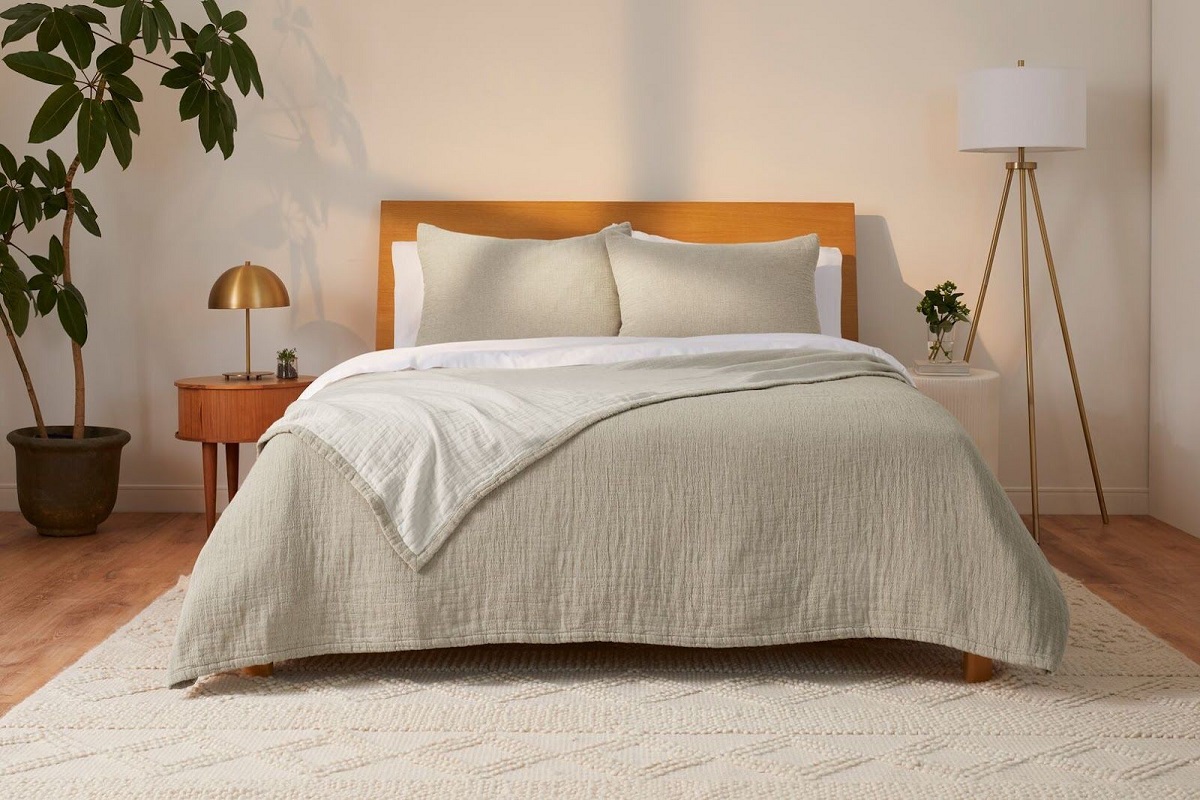
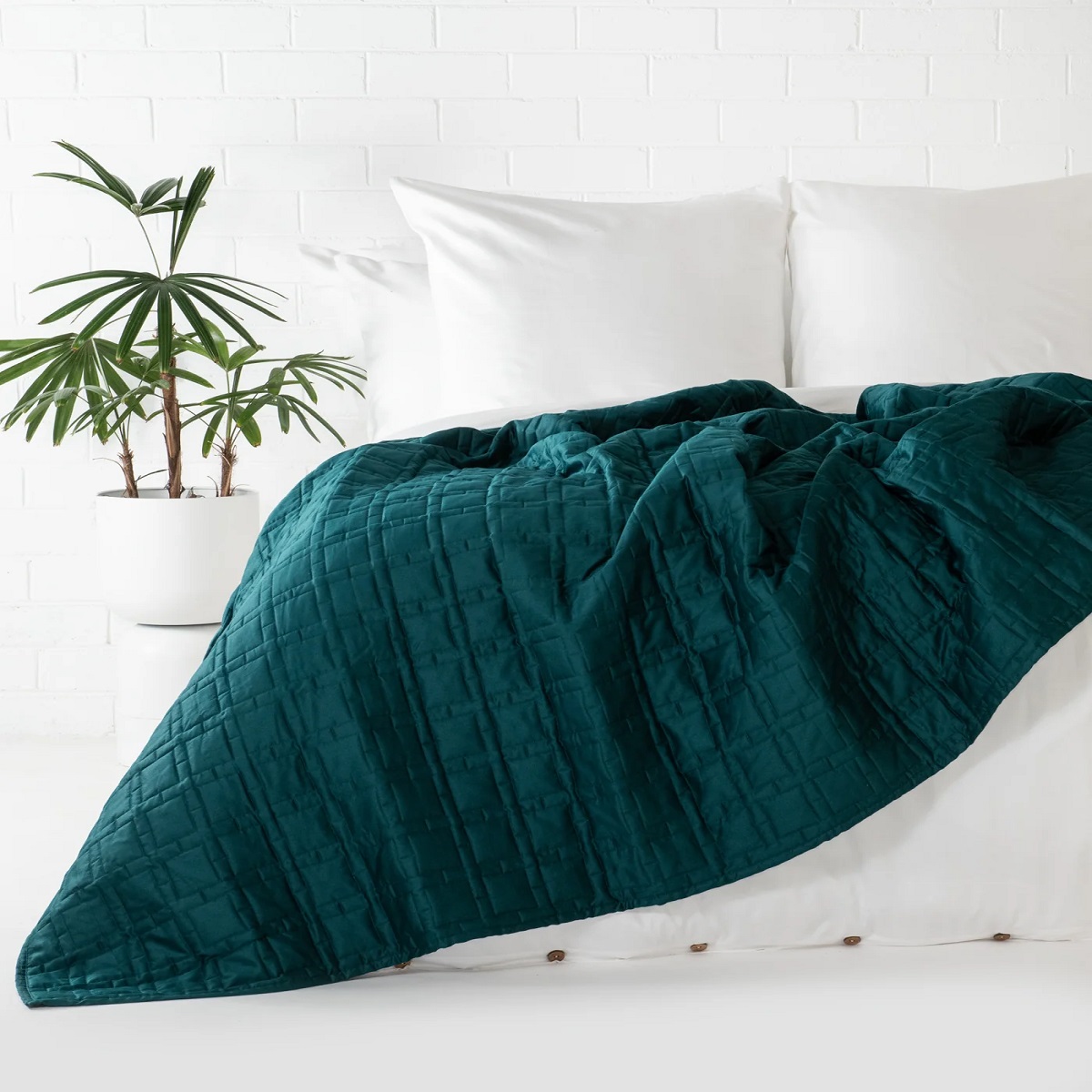
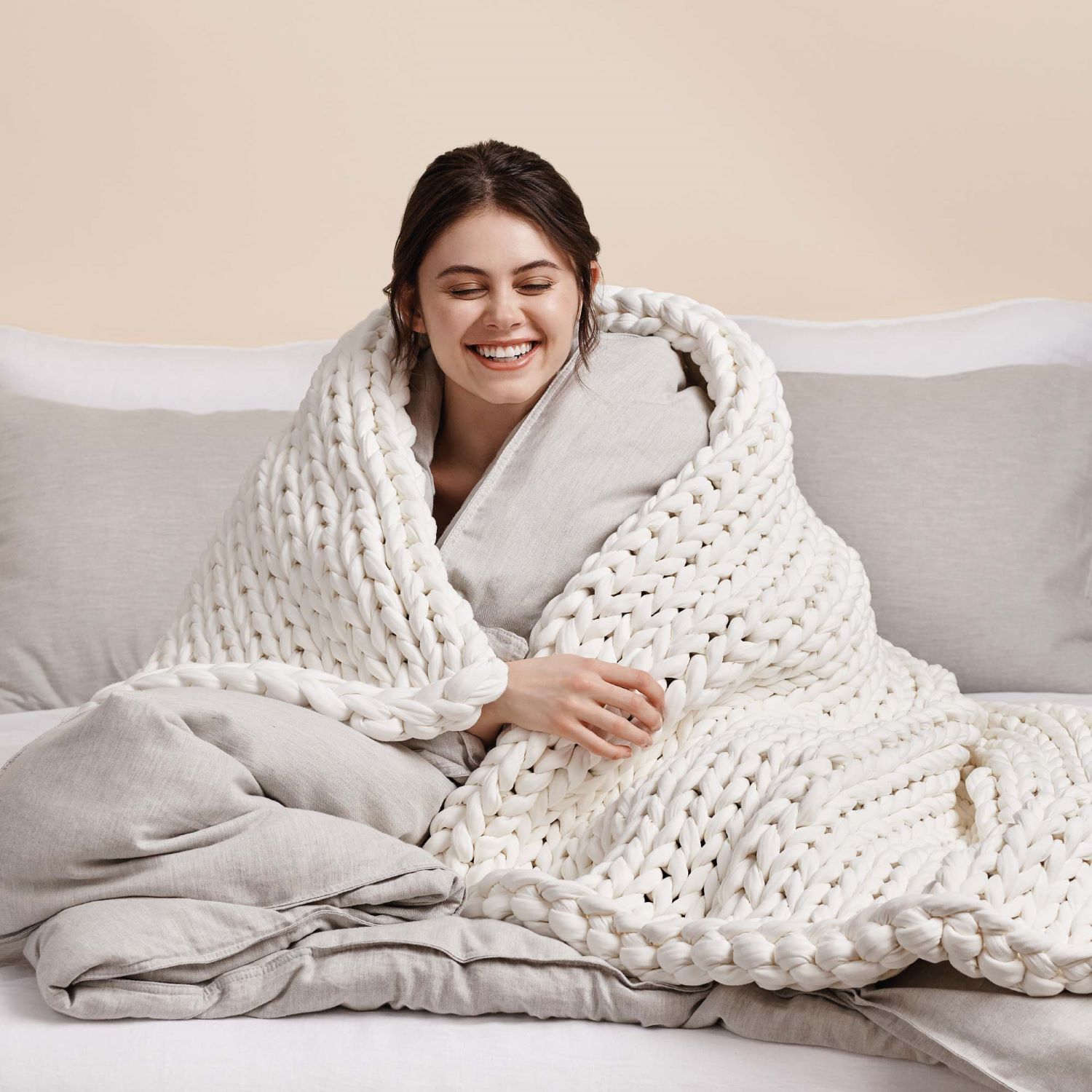






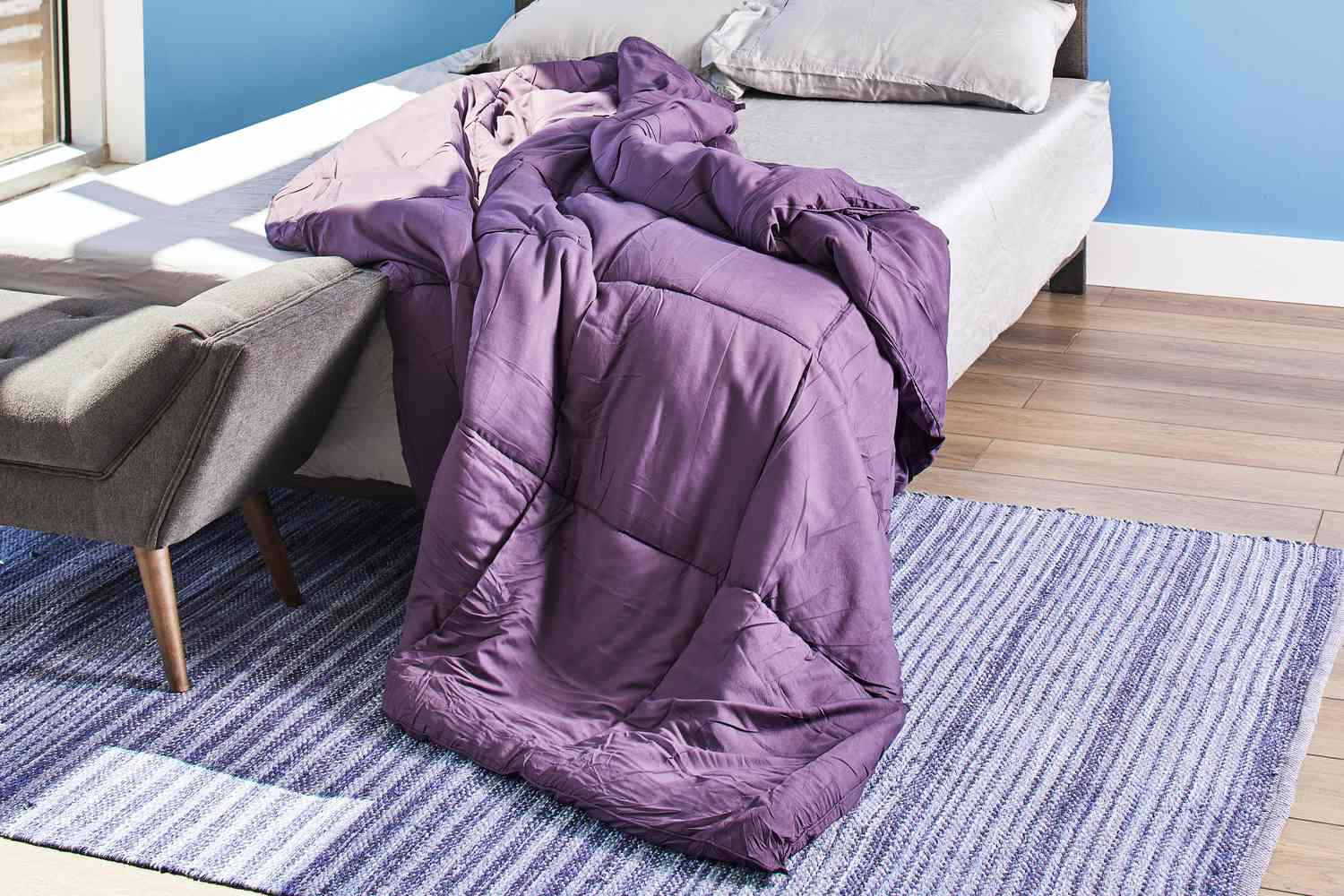

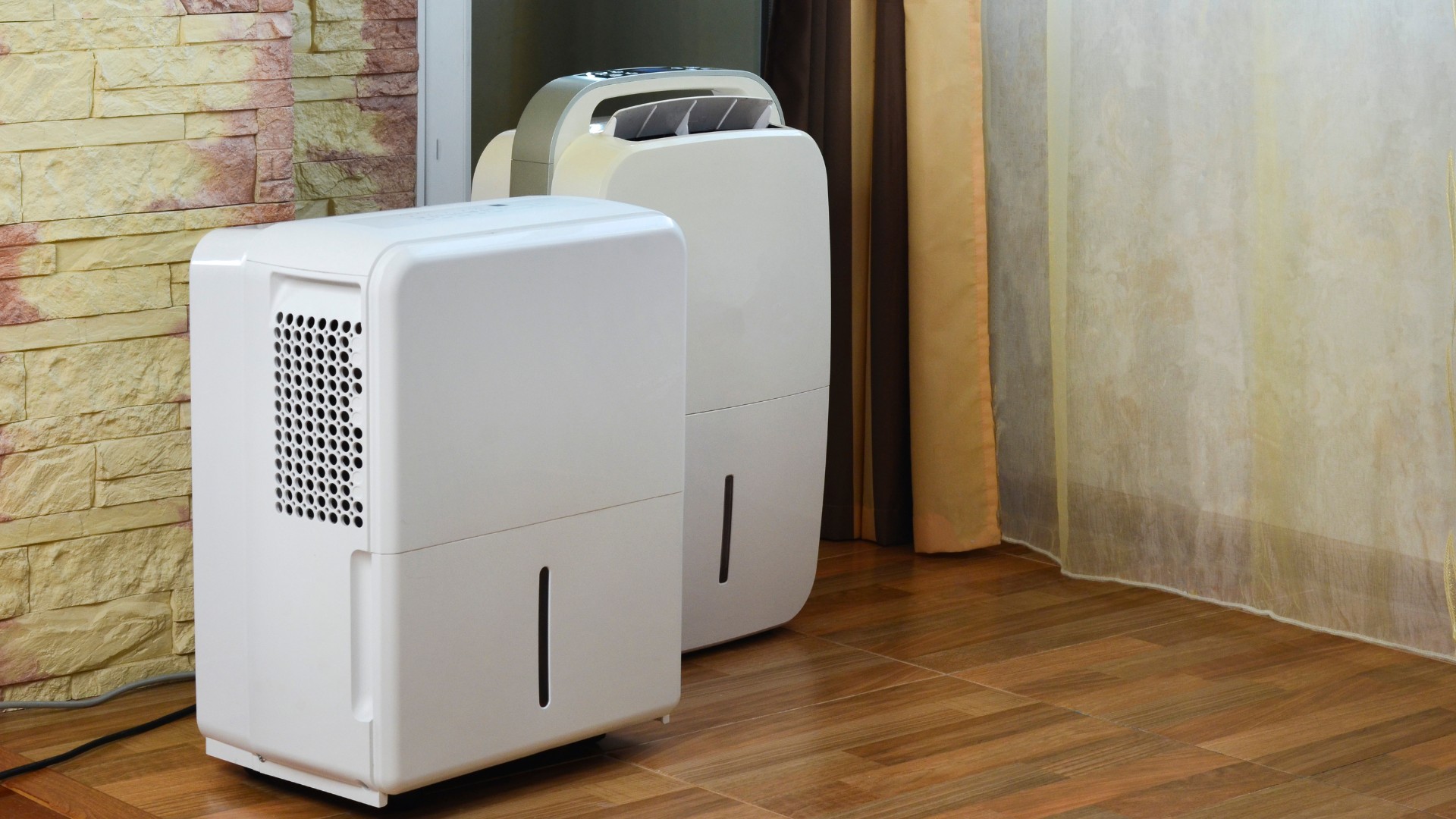
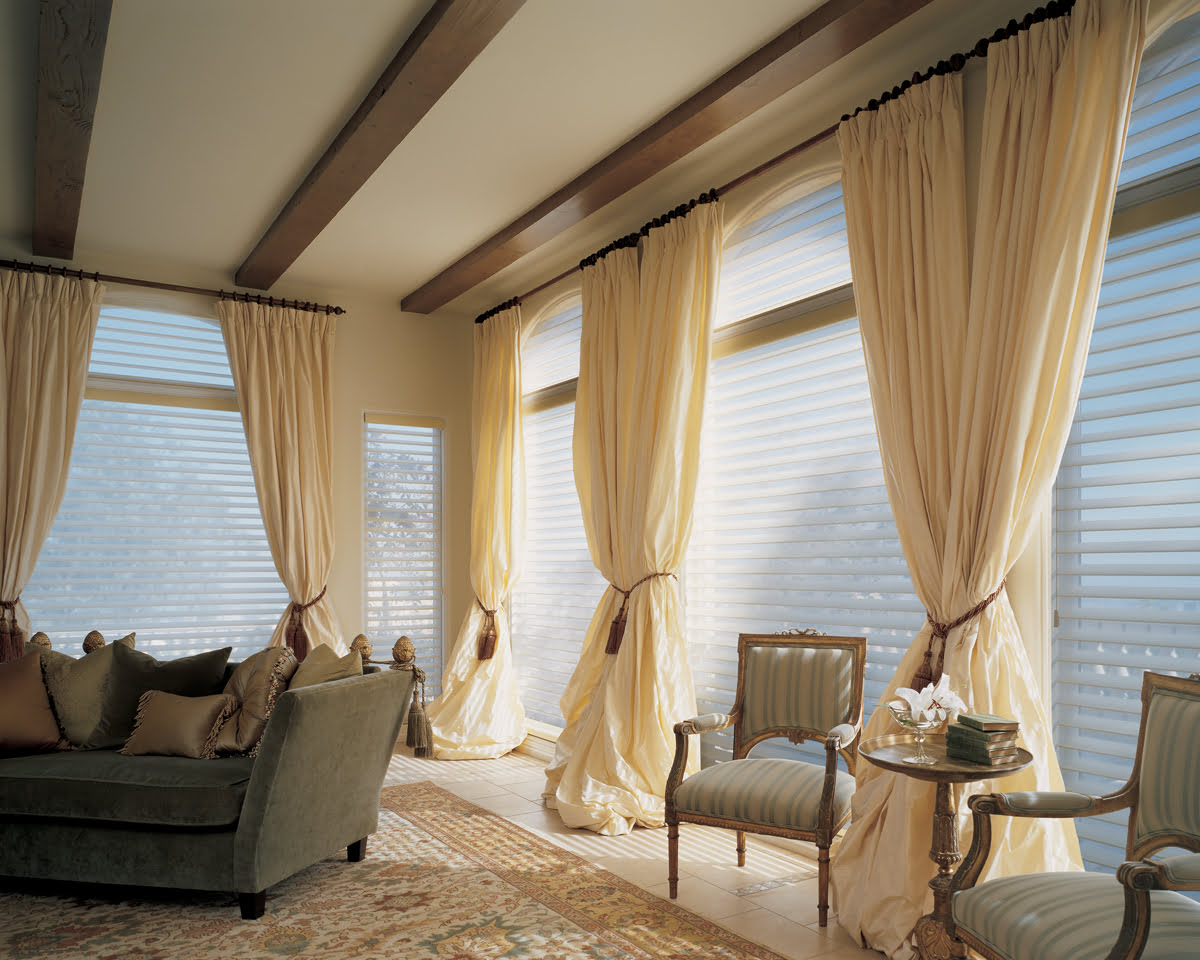

0 thoughts on “What Is The Difference Between A Quilt And A Comforter”